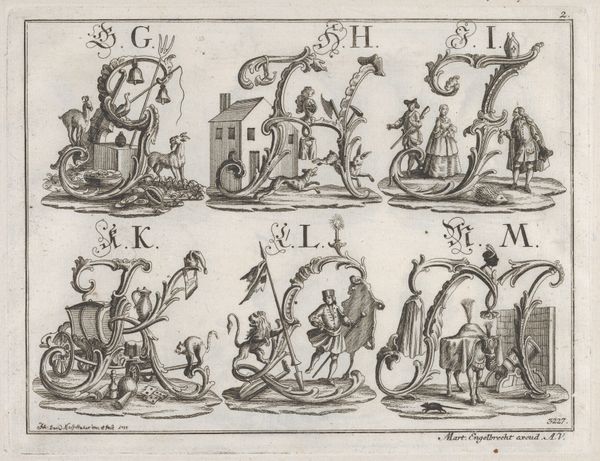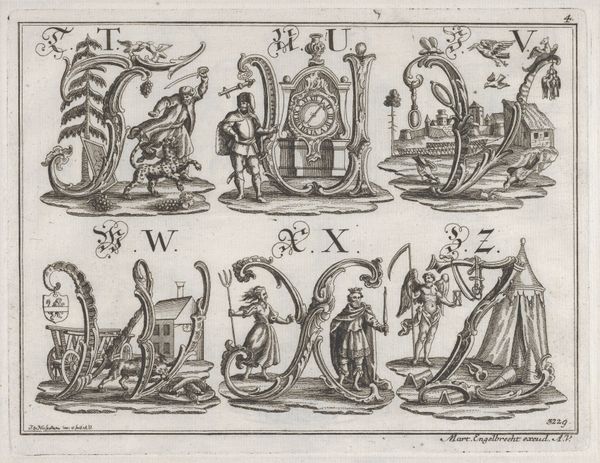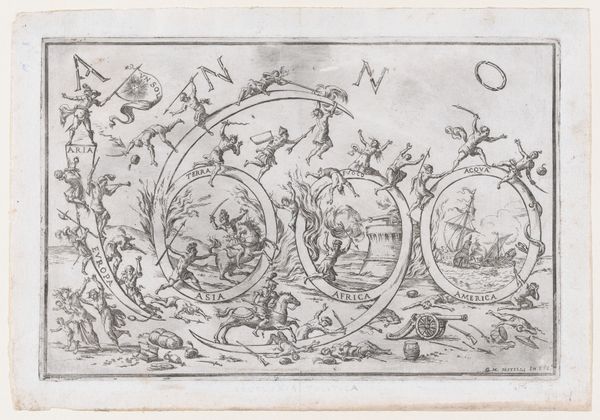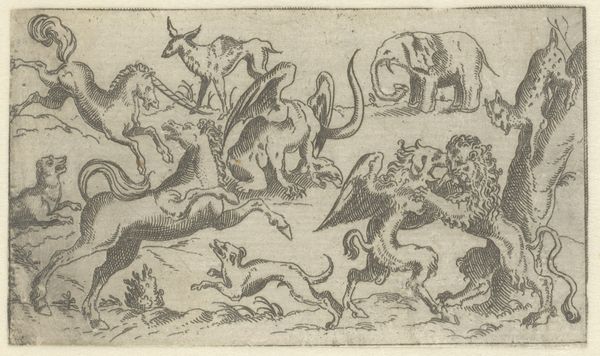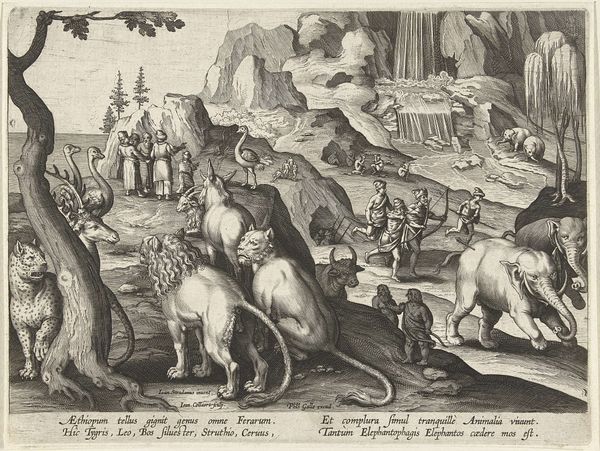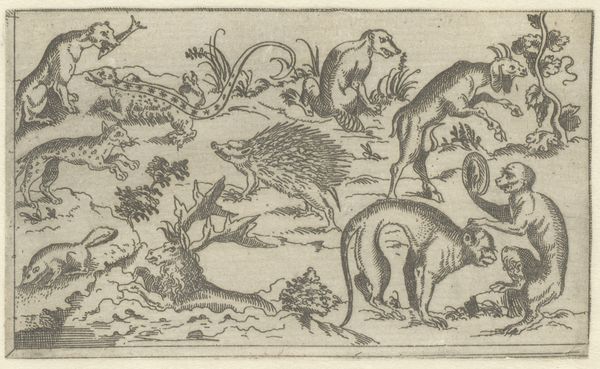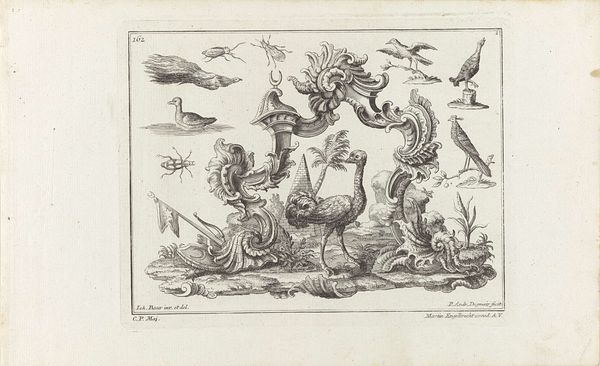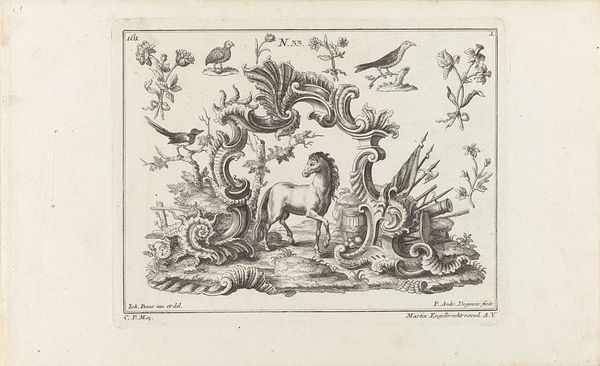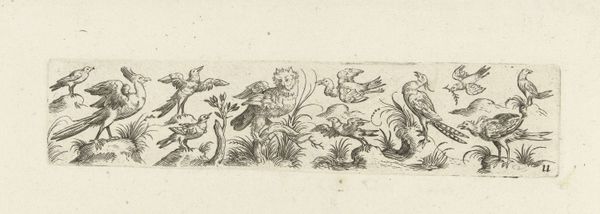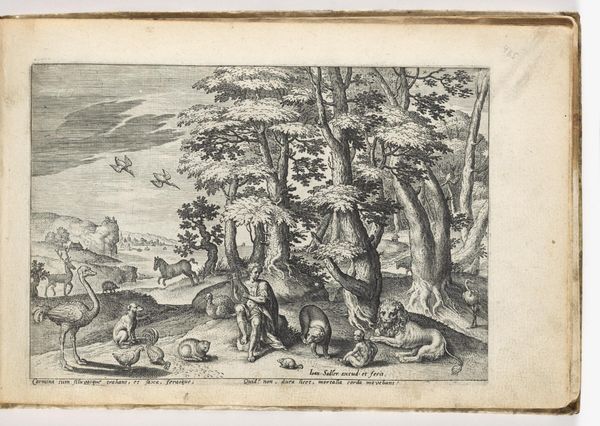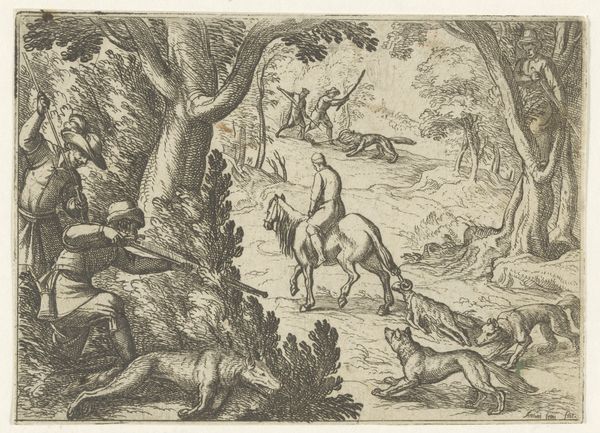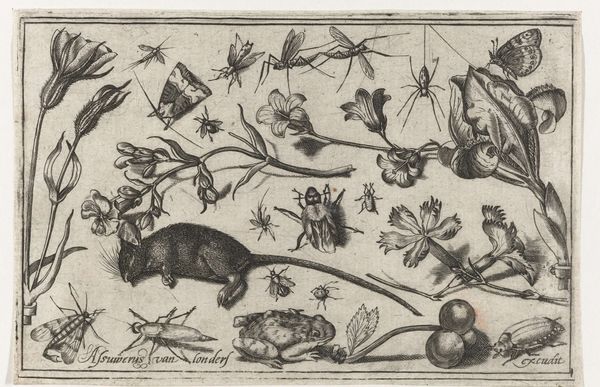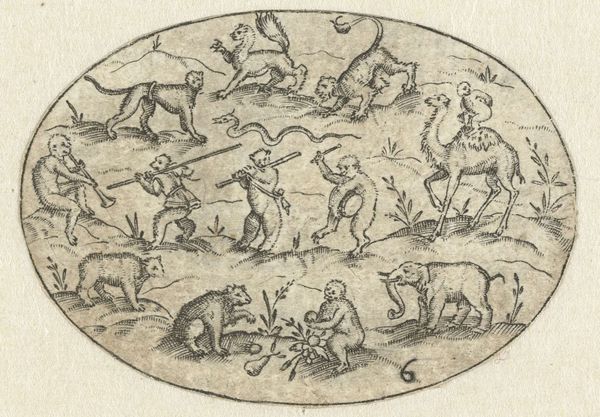
drawing, print, engraving
#
drawing
#
baroque
#
animal
# print
#
engraving
Dimensions: Sheet: 9 in. × 11 1/8 in. (22.8 × 28.2 cm)
Copyright: Public Domain
Curator: Welcome to this ornate engraving, "Decorated Roman Alphabet," crafted by Martin Engelbrecht in the 18th century. These are not just letters but miniature worlds unto themselves, each a vignette brimming with Baroque exuberance. Editor: My first impression is one of delightful visual overload. There’s so much crammed into these six letters–it's like peering into a series of miniature theatrical stages. Curator: Absolutely. Engelbrecht cleverly utilizes flora, fauna, and human figures, all swirling around these foundational forms. He transformed the mundane into the spectacular. The eagle in 'A', the bull in 'B'... What readings do these offer? Editor: They suggest a very particular worldview. The letters aren’t merely decorative; they carry coded meanings, likely tied to the social and political milieu of the time. I'm curious about the target audience. Curator: Given the style and period, these were likely luxury prints, affordable only by wealthier merchants or minor royalty. Such a print reveals not only the rising wealth of the bourgeois class, but also reveals an interest in heraldry, symbols, and the didactic values these images represented. Editor: The bestiary in each letter definitely emphasizes themes of empire and nobility. But I'm seeing something else here: this is a controlled landscape of ideas, isn’t it? The artist's frame seems almost conservative, presenting idealized symbols, and even nature feels subjugated to a pre-conceived ideal. It almost serves to underscore existing power structures. Curator: An interesting perspective. The artist clearly held control. From a formal perspective, look at the fine lines and textures, achieved through expert engraving. Engelbrecht masterfully creates depth, even in these minuscule spaces. His work was broadly accessible because prints had widespread availability. These are carefully curated spaces to be certain. Editor: Despite the seemingly light-hearted appearance, I sense a deeper cultural encoding at play. Looking at this today, in our contemporary socio-political frame, what exactly does this Roman alphabet project? Curator: Perhaps that is precisely why Engelbrecht remains engaging: he allows us a glimpse of an old, often rigid structure which once provided answers and reflected power dynamics in society. It invites new dialogue through art history. Editor: Precisely, this is an important bridge into discussing societal underpinnings and their resonance across centuries.
Comments
No comments
Be the first to comment and join the conversation on the ultimate creative platform.
